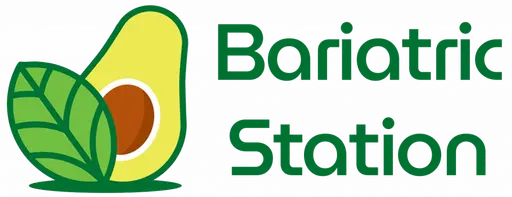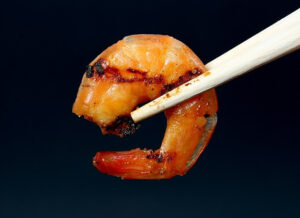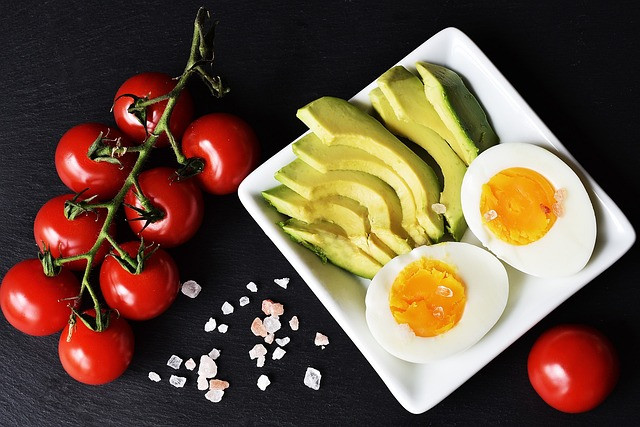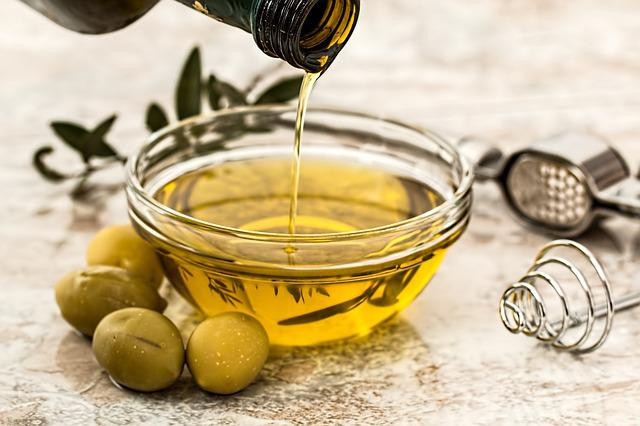Keto diet stomach pain is a common symptom when you’re following the popular diet. It’s something that is so common that people have come up with simple remedies to fix it. It’s not something that’s incurable or doomed to happen to you if you adopt the keto lifestyle.
There are concrete reasons for it, and it can be addressed pretty easily if you follow the simple remedies. However, first we need to find out why it happens.
Why Does Keto Diet Stomach Pain Happen?
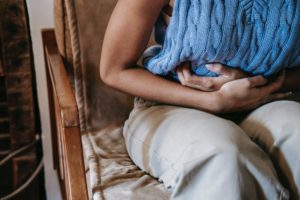
Ketogenic diets are based on high fat, and medium protein intake, with low carbohydrate intake. This combination helps burn stored calories. However, sources of protein aren’t traditionally loaded with a lot of water content, unlike carbohydrates. A low intake of carbohydrates also means that your body won’t be producing high insulin levels to store carbs, and by extension, water. That’s why your body can feel very dehydrated when it’s undergoing ketosis. A combination of these factors can result in dehydration and low blood glucose levels.
This produces something called the ketosis flu. True to the name, you can get flu-like symptoms including diarrhea and stomach cramps. It’s a series of symptoms which occur when the body is adapting to the keto diet. The exogenous ketones which you intake basically speed up keto adaptation. This means that they also speed up the common side effects of that adaptation.
That leaves the body dehydrated and faced with symptoms like headaches, abdominal pain and lethargy. You can also experience nausea and low motivation along with brain fog.
However, don’t despair. There are concrete ways to address this problem. All you’ll need is a well-formulated ketogenic diet that fits your diet.
How to Cure Keto Diet Stomach Pain
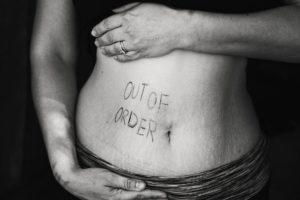
You can’t cure the keto diet stomach pain simply by increasing your carb intake. That’ll defeat the purpose of the keto diet in the first place. Instead, you’ll need to tweak your diet to compensate for the pain. You may experience a bit of stomach pain, or severe stomach cramps, and your response should be measured as such. Here’s what to do to create your own well-formulated ketogenic diet.
Drink Plenty of Water
The first and most obvious thing to do is to address the symptoms of dehydration. You need to drink a lot more water when you’re on the keto diet. Expert opinions vary from increasing your water intake by 5 glasses per day, to a total count of 64 ounces of water per day.
Since you’ll be burning a lot more calories and your body will be drier, you’ll need to replenish. If you’re taking in a lot of fiber-rich sources of food as well, then a balance of water will help. This will help with your blood glucose regulation as well.
Staying hydrated can help you even reduce muscle fatigue. This will help when you’re exercising or even doing some strenuous tasks like lifting heavy things. It’s important to keep replenishing your supply of water since your body will always need more at the end of the day. And whatever ounces of water you don’t need will be excreted out one way or another.
So drink up and improve water retention in your body.
Don’t Do Strenuous Exercise
Strenuous exercise can reduce water content in your body. In some cases, high intensity exercise can even cause inflammation during keto diets. So, it’s important to avoid it when you experience the keto flu symptoms. To avoid stomach cramps, and in some cases, muscle fatigue, you will need to hydrate and lay off the exercise.
This means don’t do intense exercises like heavy strength training or intense running. Don’t lift heavy weights or do mountain biking when you’re feeling the keto diet stomach pain.
You can try replacing your strenuous exercise with lighter exercises like brisk walking, yoga or even leisurely biking. At the end of the day, you won’t burn as many calories per day, but you’ll feel a lot better.
Take Plenty of Electrolytes
Electrolytes aren’t just important for your basic health, but they also control fundamental bodily functions. Without them, your muscles will give way because they won’t receive information from your brain. Hence, it’s important to keep a high count of electrolytes in your system.
Why is it necessary to prevent keto diet stomach pain? The simple answer is that when water is released from your body, so are essential electrolytes. This causes a lot of muscle cramps since your body doesn’t have enough electrolytes to be flexible.
Your kidney releases excess sodium from the body as your insulin level drops. Also since high potassium foods are restricted from the keto diet, your potassium levels can get low. So, you should either take mineral supplements, or increase your intake of certain fruits. This includes kale, avocado, strawberries, and raspberries. High sugar fruits like oranges and apples are off the table.
Get Some Shut Eye
One mistake people often make when entering a new diet is to disregard sleep. Sleep is just as important, if not more, in your life as diet and exercise. Fatigue and irritability are the least of your worries. if you don’t get enough sleep. Not only can less sleep degrade your overall health, but it may increase your stomach pain.
In fact, scientific studies have even linked a lack of sleep to weight gain. The lack of sleep can cause stress hormone levels to spike in the body which can make the keto diet stomach pain symptoms even worse.
If you’re having a rough time getting to sleep when you’re supposed to, then these tips can help:
- Reduce your caffeine intake: This will help you relax and get to sleep sooner. Coffee can be great for weight loss, but not at night. It will keep your awake and do more harm than good.
- Don’t use ambient lighting: It’s become cool to have ambient lighting in your home now. However, it’s not conducive to sleep. Avoiding that kind of lighting especially before bed time is very important.
You should create a dark environment in your room 2 hours before sleep. This will help you get restful sleep. You should shut off your cellphones and computers and television to do so. - Take a bath before bedtime: This can help you relax right before you go to bed. You’ll feel very comfy and ready to go to sleep right after you take a bath
- Wake up early: If you wake up at the same time every day, then your biological clock will set itself to fall asleep at a specific hour. This normalizing of sleep patterns can improve your sleep quality overtime.
With this, you’ll get plenty of sleep. Your body will thank you for this with long term and short-term effects.
Improve Your Fat Consumption
Transitioning to a low-carbohydrate diet can often take a long time to adapt to. To compensate, you can increase fat intake. Now this includes fat sources like fatty fish and nuts, but not fast food or fried foods. While too much of fat intake is a bad thing, conservatively improving it can reduce cravings and leave you satisfied. It can even help you fall asleep.
You should slowly replace a lot of carb intake with fats and proteins in your diet. With this adaptation, your body will slowly, but surely help transition to a smoother digestive process. This will reduce the overall keto flu symptoms you’re experiencing and keto diet stomach pain. Both short-term effects and long term effects of this change will benefit you.
You can refer to our article on things to eat while on a keto diet for some recommendations.
Can You Get Diarrhea from Following a Keto Diet?
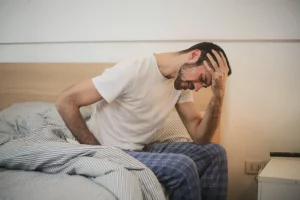
A common symptom of the keto diet is that it can lead to diarrhea. As uncomfortable as this sounds, there is a way around it. Diarrhea often happens when you shift diets or when you change your eating patterns at all.
The low carb, high protein and high-fat diet often reduces your carb intake to 5%. This means that your body completely or almost completely relies on protein and fats. However, along with shedding fat, it can sometimes whip up the body into a frenzy. That frenzy can sometimes cause diarrhea.
The imbalance resulting from this drastic change in your diet can irritate your gut. The gut microbiome feeds off the short chain fatty acids in the grains of both vegetables and fruits. These fatty acids being limited in the keto diet can set off a chain reaction if you’re not careful.
This can be remedied by eating a fair share of certain fruits and vegetables. Or you can slowly ramp up the keto diet and not fully commit to it on the first day. Remember that your body can be programmed just like a computer can. However, it takes more time to adjust than a computer does.
So, you should slowly ramp up the protein and fat and reduce the carbs just as slowly. With this gradual change, your body will understand just how it’s supposed to adapt. Going off the carbs completely will basically put your gut in unfamiliar territory. No matter how hard it tries to adjust, it will go through the motions. Quite literally.
Of course, getting an adequate water intake as mentioned before is something you should never write off. It’ll help replenish your body’s water content and increase the electrolytes in your diet.
With these tips, you’ll be able to ward off the unpleasantness of the keto diet stomach pain.
